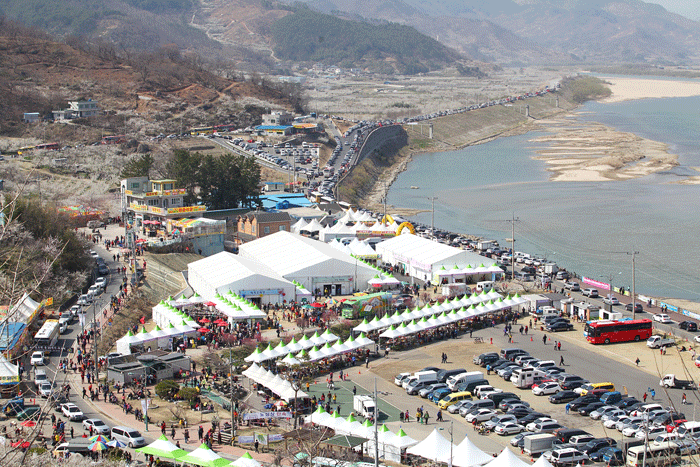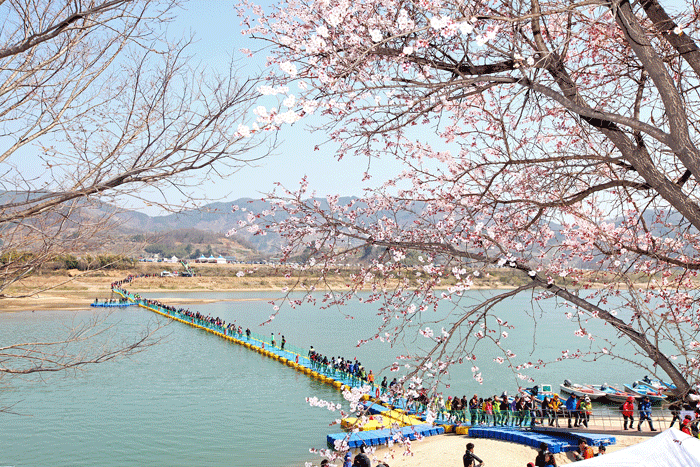Apricot blossoms, regional cultural events and industrial tours
The 17th Gwangyang International Maehwa (Apricot) Festival is scheduled to be held from March 22 to 29, 2014 at a plaza in front of the Gwangyang Railway Station and other sites in and around Gwangyang including Seomjin Village, home of the largest number of apricot blossom trees in Korea.
During the eight-day festival period, visitors from within and foreign countries can enjoy a wide variety of programs featuring the apricot blossoms, regional cultural events and industrial tourism to mention just a few.

For tourists from foreign countries in particular, the event will offer a good occasion to sample and purchase local organic apricot products which are gaining growing popularity among the health- conscious people in all age groups nowadays.
The municipality of Gwangyang hopes that the festival will play a crucial role to showcase the continuing improvements in Gwangyang and to highlight those businesses in the community that support these efforts while bringing together regional artists to show their art works, and provide a lineup of nationally recognized regional cultural resources both in and outdoor setting.

“The goal is simple. We want expose what Gwangyang has to offer and be sure attendees enjoy their stay so that they will become supporters of fast growing Gwangyang as a major provincial city blessed with rich natural tourism resources as well as old cultural heritages combined with modernized infrastructure and industrial sites nearby,” said Lee Sung-woong, mayor of Gwangyang in a recent interview with The Korea Post.
Disclosing that he prays for three things each morning after wake-up, he stressed that his first and the foremost wish for pray each morning is to make Gwangyang a global city on low carbon growth.
“The forthcoming Maehwa Festival is part of our efforts to make Gwangyang a new hub of industrial tourism destination where tourists across the country as well as foreign countries can experience truly an ecotourism and meaning of green industrial tourism as well.

He noted that Gwangyang’s image as tourist destination is predominantly overshadowed by steel mill of Pohang Iron and Steel Works and other industrial establishments in and around the city,
POSCO Gwangyang Steelworks were built in the 1980s to meet exploding demands for steel when the national economy grew rapidly. It was the second steelworks following POSCO in Korea. The site was finalized in 1981 and the construction of the first phase began in 1985; the fourth phase was completed in 1992 and the fifth phase in 1999. The steelworks produces HR steel and cold rolled steel coils in mass quantities and is the largest producer of flat-rolled steel in the world. The steelworks boasts the largest plant in the world.

In addition, the mill completed Magnesium Sheet Plant in 2007, SNNC Ferronickel Plant in 2008, and Steel Plate Factory with an annual capacity of 2 million tons in 2010. Container Terminals at the Port of Gwangyang opened in 1997. Located in the middle of Northeast Asia and in international deep sea routes, the Port of Gwangyang offers unconstrained ins and outs of large containers. The port is surrounded by natural seawalls, making it one of the safest ports from natural disasters. Right behind the port is the large industrial complex (6,611,600m2). Designated as a free trade zone in 2003, the complex helps Gwangyang have a brand image as a global city in free trade.
Mayor Lee declared that his next target is to make Gwangyang a new hub of clean and green industrial tourism attraction unmatched by any other similar city in the world.


